Are Indonesian madrassas allies in the fight against Islamic radicalisation?
An exploration inspired by two literary works
Hola Global Jigsawers,
This post is a longish read about Islamic boarding schools in Indonesia, locally known as pesantren. Are these schools allies in the fight against religious radicalism or do they fuel it? I visited one of the archipelago’s most prominent pesantren in Gontor, East Java, to discover just how complicated this question is and therefore how ambiguous any answer ends up being.
Islam’s role in Indonesia is a contested one, complicated by the country’s relatively new transition to democracy. Freed from some of the “secular” restrictions of the Suharto-era that ended in 1998, a religious revival in Indonesia has been underway over the last two decades. This is not a development to be sanguine about, given the tide of Islamic fundamentalism that is sweeping the globe, from Afghanistan to Mozambique. Indonesia is an important gauge for the compatibility of democracy and Islam and pesantren are central to the shaping of this dialectic.
At the entrance to Gontor, one of Indonesia’s best known pesantren
************
The mosque’s silhouette was blurred in the downpour. The rain in East Java is heavy, which gives the land its paddy-green hue and fills the villages with the scent of moist-earth. It was the hour of the maghrib prayer and all 4,000 students at Pondok Modern Darussalam Gontor were gathered inside the building.
I stood swatting away giant flying ants in the tubelight-lit veranda of the school’s main assembly hall, diagonally across from the mosque. Suddenly, a lava-flow of boys gushed down the long staircase from the mosque’s upper-floor prayer room. Their slippers made squelching sounds in the wet. Most hitched up their colourful batik sarongs above their knees. Prayer mats hung from their narrow shoulders.
The boys gawked at me, a bedraggled salwar kameez-clad apparition, standing in the rain taking notes. Their dark eyes were curious, but they averted their faces if I looked at them directly. Some of them were not even teenagers yet and retained the prettiness of pre-pubescence.
A lava-flow of boys gushed out of the mosque
My chaperone at the school, a 23-year-old teacher named Ustad Aliy, offered to hold my handbag as I scribbled notes furiously. “Terimah Kasih,” I nodded in acknowledgement, using the Bahasa Indonesia phrase for “thank you.” Aliy looked startled, as though unsure of how to respond.
I corrected myself and said, “shukran.” I’d already been told that in Gontor speaking Indonesian was against school rules. The only languages permitted were Arabic and English
*********
Gontor is one amongst the thousands of madrassas or Islamic schools that dot the Indonesian archipelago. They are usually located in the countryside. Most combine scriptural learning with secular elements taken from the national curriculum, although more traditional ones focus exclusively on religion.
Pesantren have existed in Indonesia for centuries. But their reputation has taken a battering as Islamic radicalization has become a concern world-over. Are they breeding grounds for Islamic extremists?
Indonesia has suffered from Islamic terrorism since the start of the new millennium. The most notorious attack was the 2002 bombings in Bali, which killed over 200 people. More recently, militias in Syria and Iraq, including the Islamic State, have attracted over upwards of 800 recruits from the archipelego.
About 40 pesantren are known to be associated with terrorist outfits like the Jemaah Islamiyah (JI)- the group responsible for the Bali bombings. But there are 200-plus others that do not preach violence. All, however, emphasize a strictly orthodox, “Wahabi,” understanding of Islam inspired by the ideas of Muhammad ibn Abd al-Wahab.
Some analysts argue, counterintuitively perhaps, that pesantren in fact serve as a bulwark against extremism, by giving students pride in their own culture. There is research that indicates Indonesia’s secular universities are more fertile grounds for Islamism than pesantren.
Why?
Because it’s often students who are unfamiliar with the intricacies of their own religion who are more easily swayed by religious “proofs” quoted out-of-context regarding violent jihad. But pesantren graduates who have been schooled in Koran and Hadith scholarship can spot scriptural distortions with greater ease. They also tend to be more connected to their communities, which gives them a stable sense of identity and consequently makes them less prone to radicalization. Or so this line of reasoning goes.
*********
My personal curiosity regarding pesantren was less academic and more literary. I’d first read about them in V.S. Naipaul’s 1981 travelogue, Amongst the Believers, which described his journeys to four Muslim countries, including Indonesia.
Naipaul was confused by the pesantren he visited and cynical about their value. He remained unconvinced that students learned anything useful there. He was also darkly suspicious of the Islam emptied of “local particularity” that some of these schools emphasized. His conclusion of the first pesantren he visited, “..it wasn’t tradition, and it wasn’t education. It was a breaking away from the Indonesian past; it was Islamization; it was stupefaction..”
Several years later, I read Indonesian writer, Ahmad Fuadi’s, best-selling, fictionalized-memoir, The Land of Five Towers, which painted a rather different picture. Fuadi was a Gontor graduate and the book centers on his four years at the school in the late 1980s.
It read like an Indonesian version of one of Enid Blyton’s Mallory Tower series. Essentially a boys’ boarding school adventure, the book detailed the life-transforming experience Gontor was for students, as they forged close friendships and imbibed the school’s inspirational motto, man jadda wajada (he who gives his all will succeed).
===========================================
Gontor was established in September 1926 by three brothers collectively known at the school as the trimurti. That this triumvirate of Muslim reformers are referred to by a Sanskrit term, literally the ‘three forms,’ that denotes the three Hindu Gods of Brahma, Vishnu and Shiva, is an irony that was lost in Gontor.
Gontor’s trimurti
The term’s Hindu connotations had become opaque with the centuries. They elicited no recognition when I raised the matter during my visit to the school. I was reminded of Naipaul’s observation of Indonesians as a people who had simultaneously retained and lost their Hindu-Buddhist heritage, so that they “talked as though they remained mysterious to themselves.”
Gontor was founded against a socio-political backdrop in which pesantren struggled to come to terms with the gauntlet of “modernity” that western colonialism had thrown down. The trimurti derived their institutional inspiration for their school from the venerable Al Azhar University in Cairo, the relatively unknown Shinquit Islamic school in Mauritania, the reformist Aligarh Muslim University in India, and the Bengali-Hindu Nobel laureate, Rabindranath Tagore’s, experimental school at Shantiniketan.
The school curriculum included non-religious subjects such as science and history, but the greatest emphasis was on ‘foreign’ languages, with English and Arabic being the sole media of instruction.
*******
I visited Gontor in mid-November a few years ago. The novelist Ahmed Fuadi had made introductions, and as a result I was picked up at the Solo airport by Ustad Aliy, the young teacher who was my guide through the trip.
Ustad Aliy
At the school, students’ lives were Spartan. They slept 30 to a room. They had scant belongings except a mattress, a few changes of clothes and their books. “It is a simple life, but our kiai always stresses simplicity,” Aliy beamed. “Simplicity and sincerity.”
There was something a tad cult-like about the teacher’s enthusiasm. Every once in a while he would squeeze his eyes shut, as though in ecstasy, and proclaim, “I just love Gontor.”
It was only 8:30 in the morning when I arrived at the school, but the sun was already harsh. The students were in their classrooms, where they stayed put between 7:00am and 12:15pm every day. But their morning had started much earlier. The whole school observed the Fajr prayers at 4:30am. Teachers then assigned new words in Arabic and English to students for them to practice and use throughout the day. Between 5:30 and 6:30am the young men had to do laundry, bathe and eat breakfast. I was exhausted just listening to this punishing schedule.
Naipaul had noted that pesantren “still kept the hours of the monastery, still required day and night devotion of the inmates,” and this certainly seemed true of Gontor.
********
I was scheduled to meet one of the school’s three kiai around noon. Before the meeting Aliy fussed about me like a mother hen, directing me to adjust my head scarf this way and that, until it had achieved some ideal of hair-covering perfection.
My interview with Kiai Hasan Abdullah Sahal began a tad uncomfortably. He refused to meet my eyes. It was difficult to move the conversation beyond platitudes until Aliy mentioned that the kiai had visited India in 2009. When I asked where, specifically, he’d been, the 67-year-old became animated as he searched his memory for names. “It was a university,” he said, snapping his fingers to aid his memory. “The one where Shahrukh Khan went.”
Interviewing Kiai Hasan Abdullah Sahal
“Surely, you mean Sir Syed Ahmed Khan? Was it Aligarh?” I countered. But the kiai only looked confused. “I’m an old man,” he said apologetically. “I forget names.” Later, a senior teacher who had accompanied the principal to India told me that the university in question was indeed Shahrukh Khan’s alma mater: Jamia Millia Islamia.
********
Gontor is not typical of Indonesia’s pesantren, the majority of which are smaller, and less well funded. But it is possibly the single most influential Islamic boarding school in the country, boasting an array of alumni luminaries, who collectively dominate the religious landscape of the country.
Uniquely, Gontor graduates have held top positions at both of Indonesia’s rival social Islamic organisations, the “traditionalist” Nahadlatul Ulama (NU), and the “modernist,” Muhammadiyah. The membership of these two organisations numbers in the tens of millions, but while NU promotes a traditional Islam that is rooted in the cultural particularities of the Indonesian archipelago, Muhammadiyah is oriented towards “cleansing” Islam of some of its local flavour and advocates greater scriptural adherence.
I met with Dr Dihyatun Masqon Ahmad, one of the school’s most senior faculty.
He’d studied in India, at Jamila Millia Islamia (of Shahrukh Khan fame) in the early 2000s and spoke passable Hindi. He told me that Gontor was a paragon of belief in diversity.
“Only belief in Allah is required here, “he said, pointing out that all four schools of fiqh, or Islamic jurisprudence: Shafi’i, Hanafi, Hanbali, Maliki, were taught at the school. “We are a meeting point for all.”
With Dr Dihyatun Masqon Ahmad (extreme right)
One reason why some experts believe that pesantren serve to inoculate students against radicalization is the concept of the contestation of ideas that emerges naturally in these schools because of this teaching of the fiqh.
********
Yet there are limits to how much diversity is accepted at Gontor. Muslims identifying as Shi’a or Ahmaddiya, for example, are not discussed. In recent decades, Indonesia’s Ahmaddiya and Shi’a communities (which comprise less than 1 percent of the total population), have complained of rising intolerance, including incidents like the forcible closing down of their mosques.
Negotiating the considerable diversity within the Islamic fold is moreover, not the only tricky bit of ideological navigation that pesantren must undertake. Their relationship with Indonesia’s pre-Islamic culture, a mixture of Hindu-Buddhist and local animist practices, that are collectively known as “adat” is another challenge.
Most Indonesian Muslims continue to observe a range of cultural and spiritual practices that pre-date Islam’s advent to the region. Communities have their own distinct “adat” ranging from ceremonies in which the future is read in the entrails of chickens, to throwing rice cakes at each other in order to propitiate the “spirits” of the paddy fields.
NU-run pesantren tend to be comfortable with the co-existence of adat and agama (religion). But Gontor, as a “modernising” school must walk a fine line between advocating a “reformed” Islam cleansed of these practices, while tolerating some of them, as long as they are seen as purely cultural rituals divorced from religion.
Aliy cited the example of the Reog dance, which involves the donning of elaborate lion and peacock masks to enact folk tales rooted in Ponorogo, the regency where Gontor is located. Pesantren students and faculty are allowed to attend these dances. “They are just a dance,” Aliy said, explaining that the school does not believe there is anything “against agama (Islam)” in them.
The third ideological obstacle course that pesantren in Indonesia traverse involves nationalism and the relationship of the schools with the non-Islamic state.
The doctrine of Pancasila, that the Indonesian constitution is based on, professes a “belief in the divinity of the one God.” But, by leaving out a reference to any specific God, the Indonesian constitution also protects the right of citizens to freedom of religious belief and practice. Although close to 90 percent of Indonesia’s 250- million citizens self-identify as Muslims, the state officially recognizes five other religions as well: Hinduism, Buddhism, Protestantism, Catholicism and Confucianism.
Pesantren are independent of the state and often fiercely committed to this independence. At the same time they accept varying degrees of financial assistance from local and central authorities.
Dr Dihyatun told me that Gontor was proudly nationalist. “We sing the national anthem at our assemblies and we believe Pancasila to be the greatest gift for Indonesia.”
In a classroom at Gontor
“And yet, they dare come here and accuse us,” Dr Dihyatun complained, “They ask all these questions, as if we are terrorists.” His voice rose an octave. In the wake of terrorist attacks in Bali and Jakarta, Indonesia’s tough counter-terrorist unit had paid interrogatory visits to pesantren across the country, including Gontor. This was scarcely surprising given that the spiritual head of the country’s most notorious terrorist outfit Jema’ah Islamiah, Abubakar Ba’asyir, is a Gontor alumni from the 1950s.
Baa’syir who served a 15-year prison term for his involvement in running terrorist-training camps in Aceh (he was released from prison on 8 January 2021), is the founder of Indonesia’s most infamous radical pesantren, Al-Mukmin in Ngruki, located not far from Gontor. Dr Dihyatun complained about how some journalists confused the Gontor school with the one at Ngruki. But he also refused to condemn Ba’asyir himself, describing the convicted terrorist as “an old guy with his own ideas.”
Abu Bakar Baa’syir
It is not religion that is behind radicalisation Dihyatun claimed but “poverty, western imperialism, and inequality.”
*********
Despite the over-simplification, there was perhaps some truth to this explanation. I was struck by the point about inequality, which had strong resonance in a country like Indonesia, where socio-economic differences are stark. In this context, pesantren have an important leveling effect.
Regardless of background, Gontor students pay only $40 a month all-inclusive as fees. Many of them are poor boys from the sticks, yet others come from privileged families. Members of former vice President Jusuf Kalla, who is one of Indonesia’s wealthiest men, have studied at Gontor.
It is quite remarkable for young men to have exposure to the kind of diversity of student-population that the school boasts, a fact that comes through clearly in Fuadi’s fictionalised memoir, where he talks in detail about his friendships with boys from far-flung parts of the archipelago. Fuadi’s closest friends included, Dulmajid, the son of a poor salt farmer from the island of Madura, as well as Atang, whose parents were middle-class, art-loving, government employees from Bandung city.
*******
I left Gontor on an overnight train to Jakarta where the bright tube lights were kept switched on throughout, banishing any possibilities of sleep. I passed the time trying to digest what I had seen and heard. In many ways pesantren symbolised the unresolved future of Indonesia. In their ideological incoherence, the push and pull of all the competing visions of the country: nationalist, Islamist, syncretic and radical, were present.
*****************
If you have enjoyed reading this post, please do consider subscribing to The Global Jigsaw. Writing this newsletter takes time, effort and resources – all of which depend on your support.
If you are unable to subscribe, please do share with others, so we can keep building our following.
As usual, I would love to hear your feedback, comments, thoughts.
Thanks much and ciao until later,
Pallavi




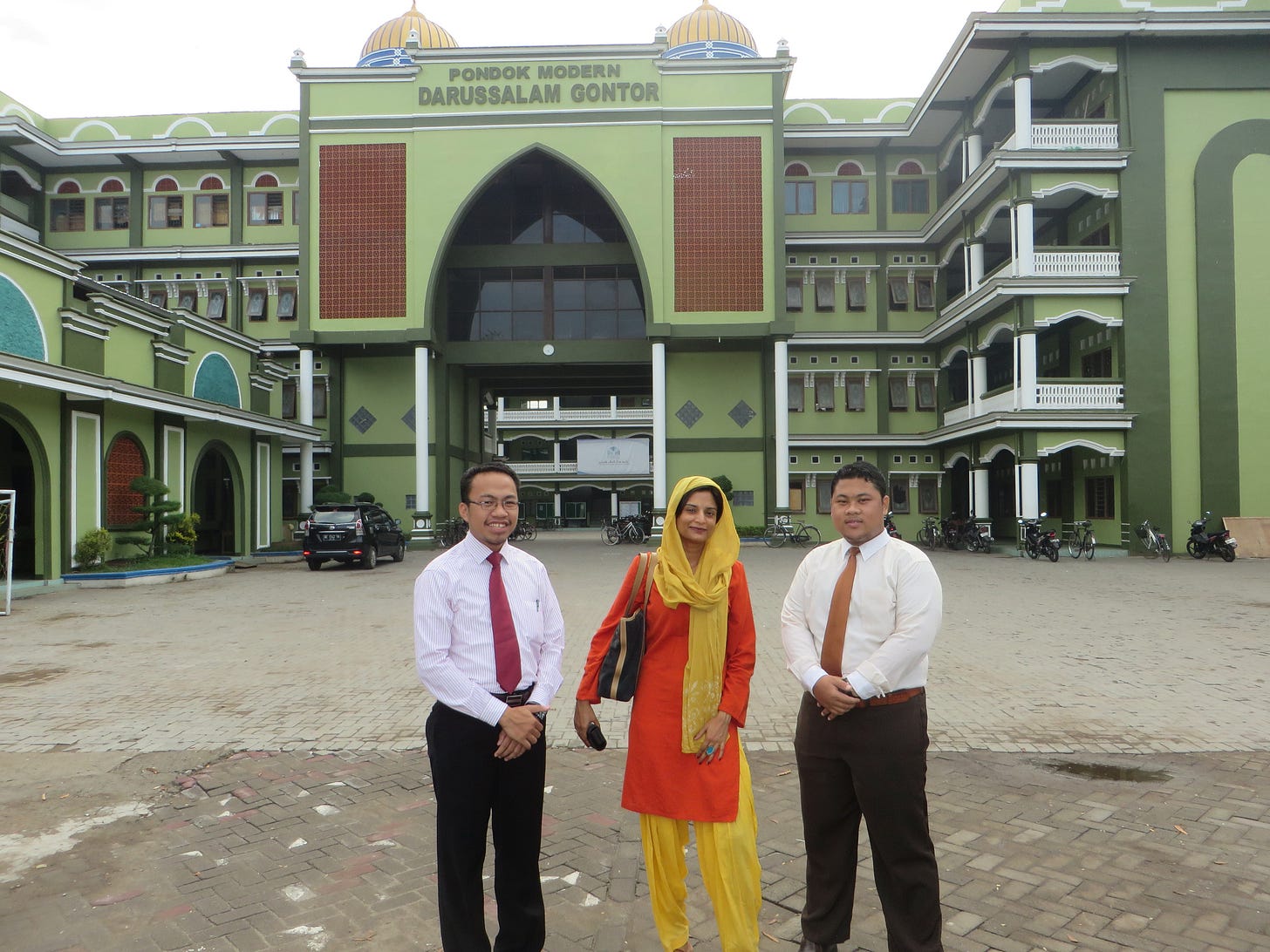
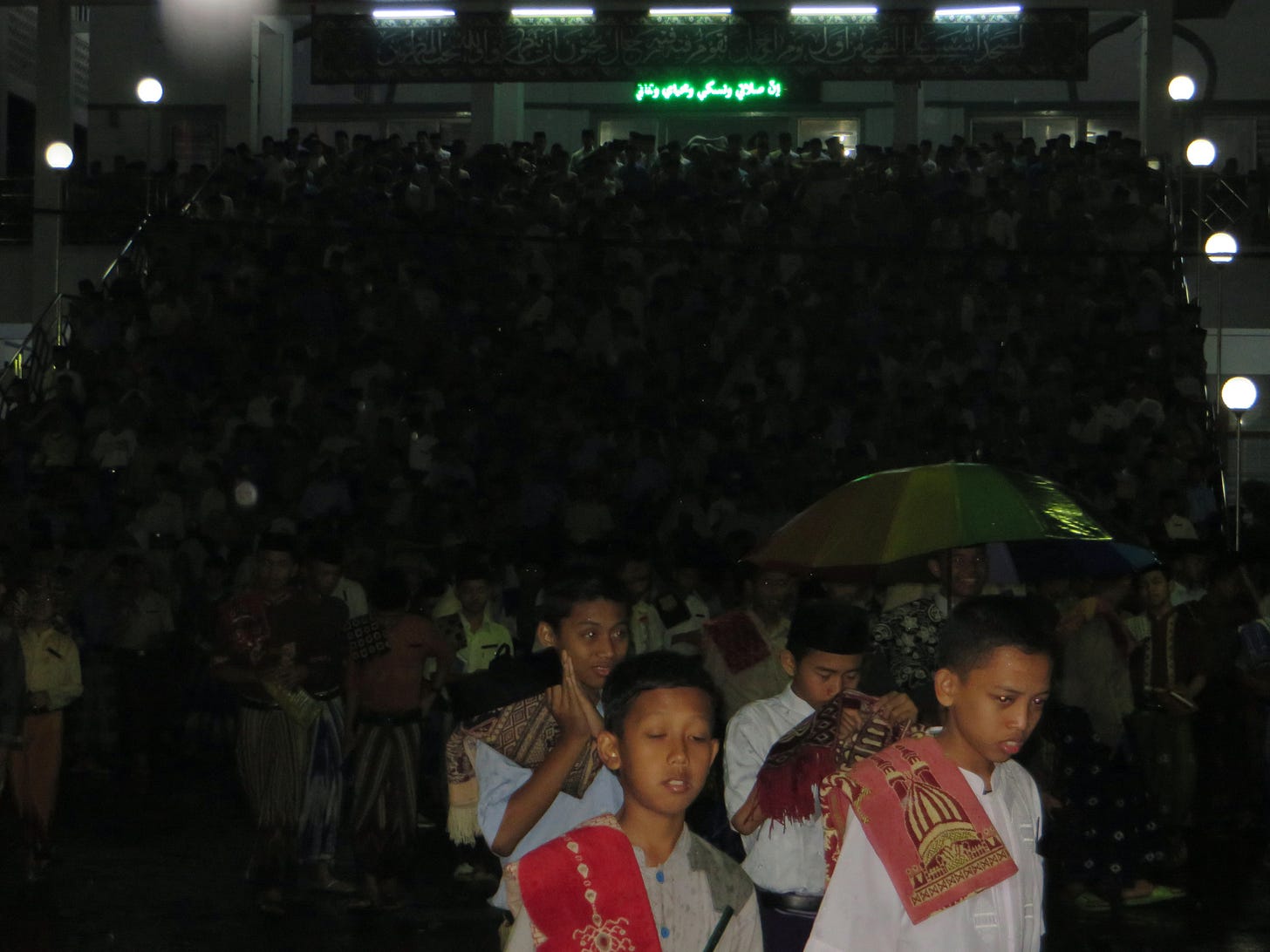
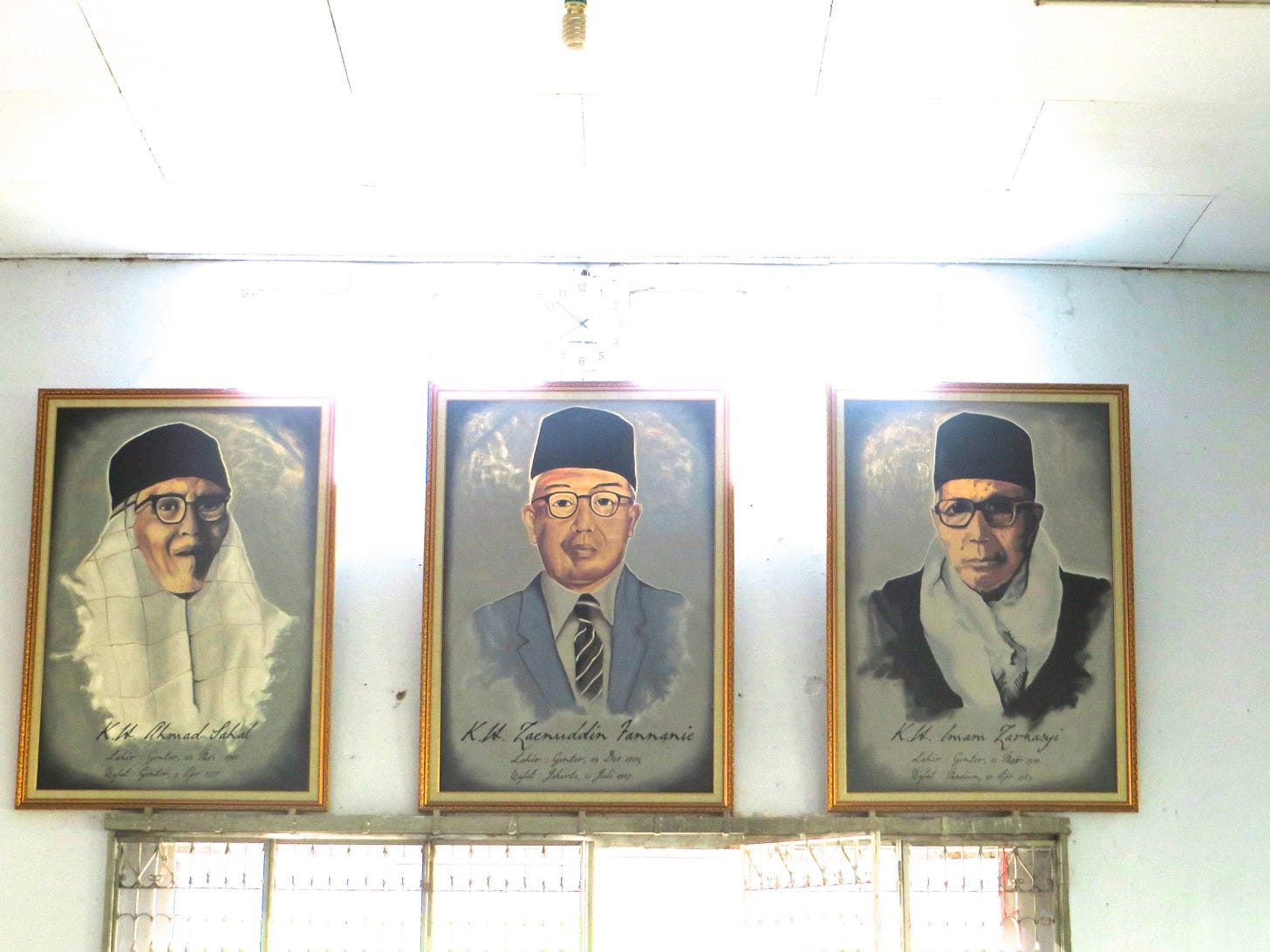
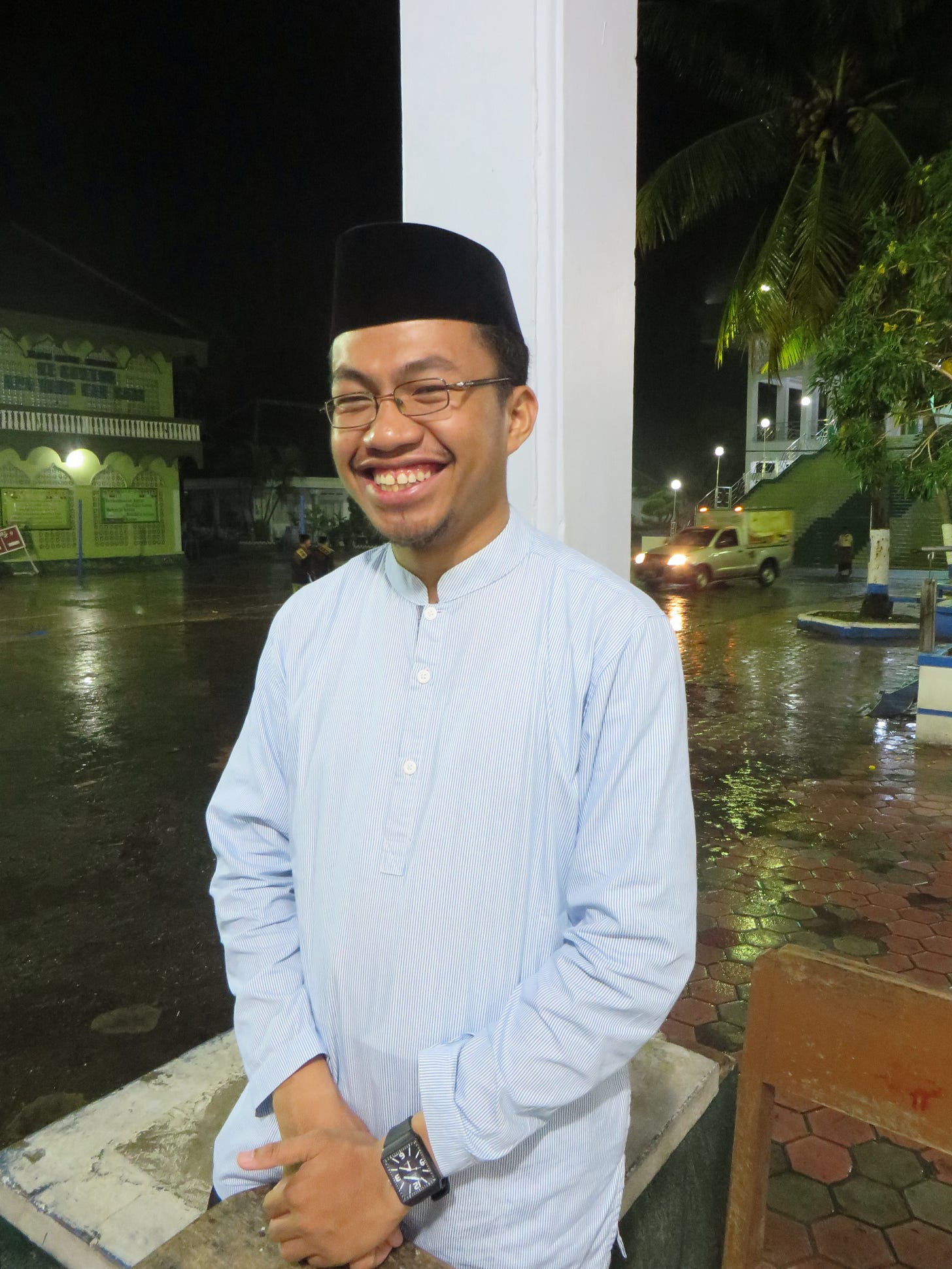
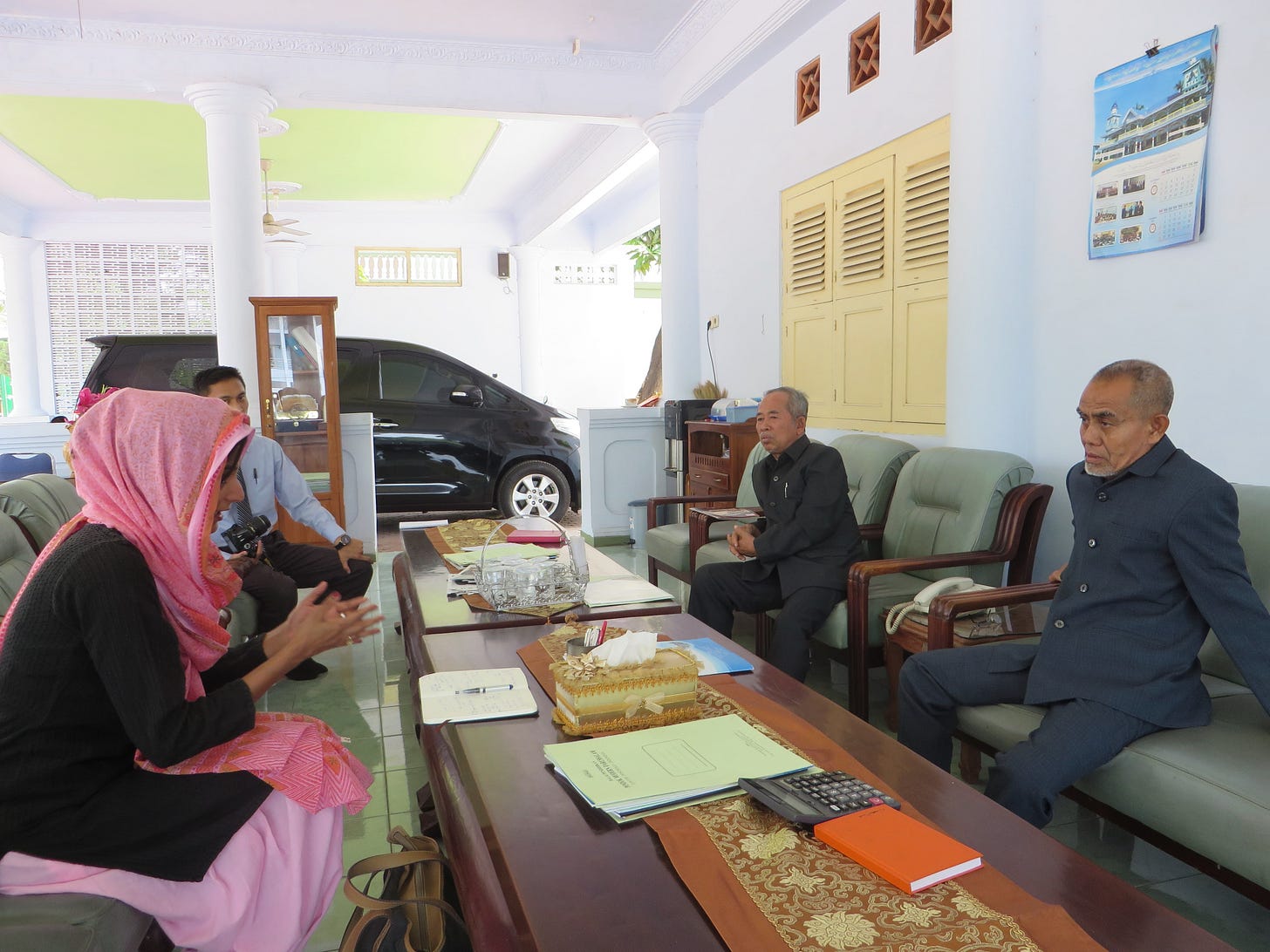
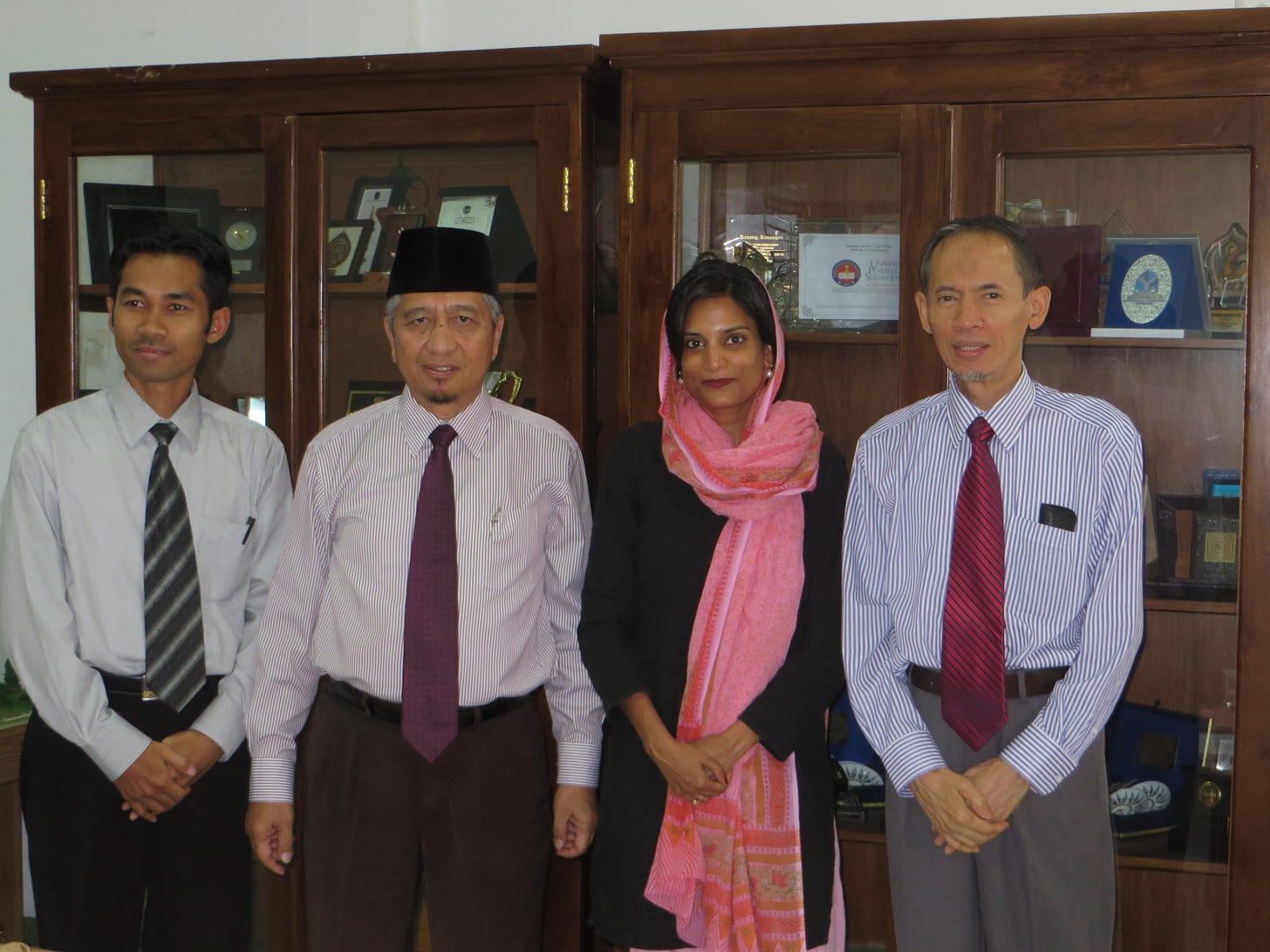
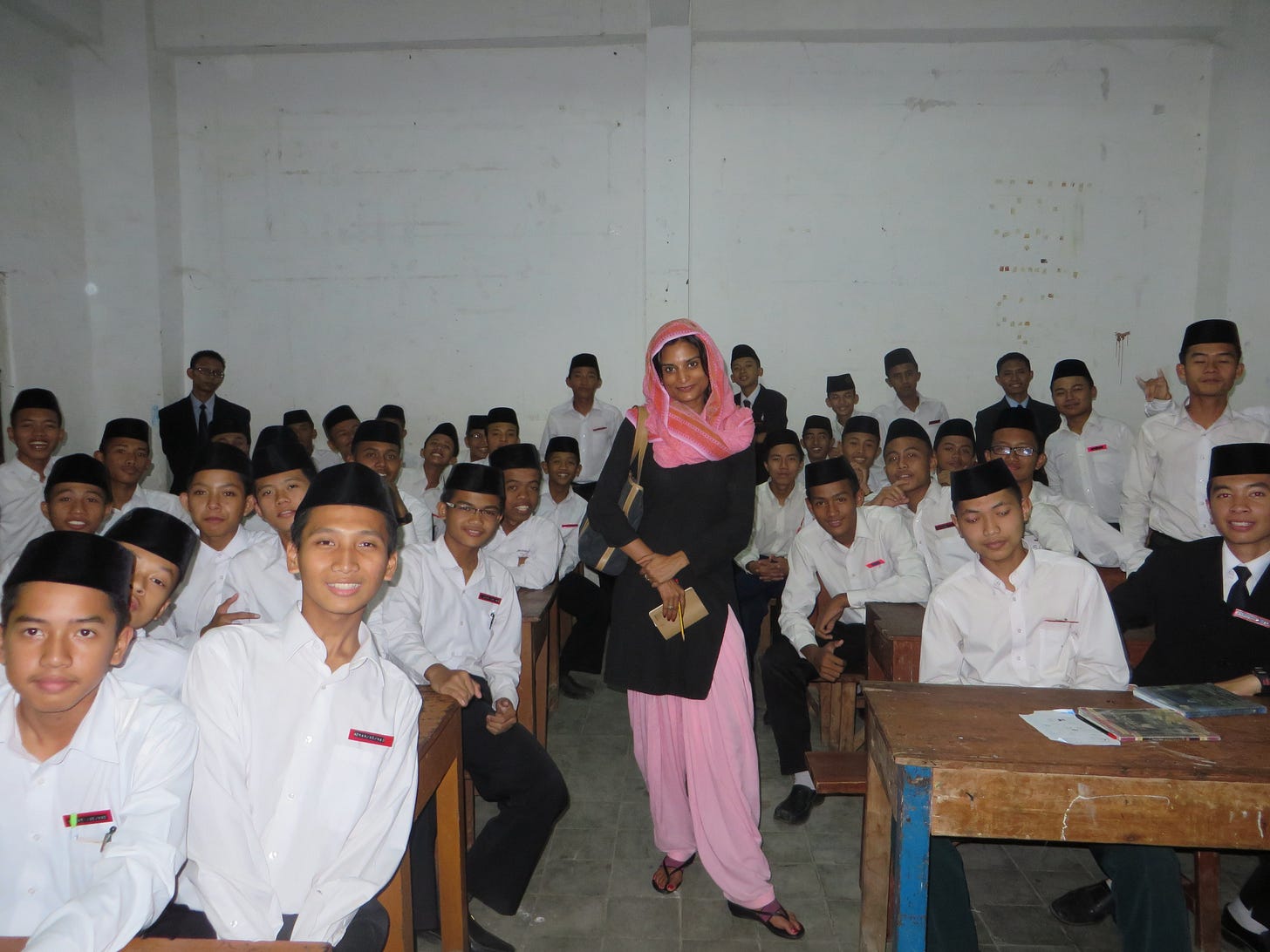

Indonesia is so many things - right up to the communist uprising and rebels besides the palimpsest of animistic , Hindu, Buddhist and Dutch colonialism !
Recently caught up again with “ The year of living dangerously”.